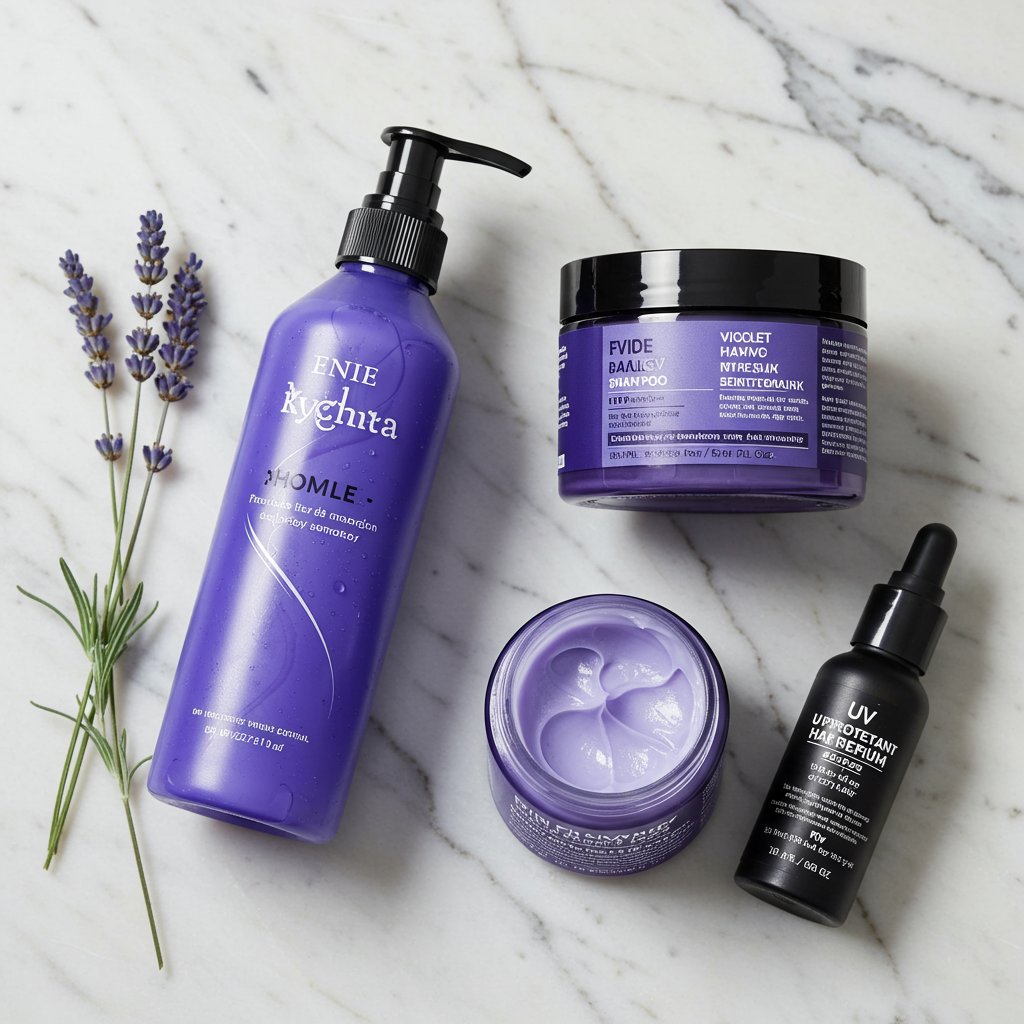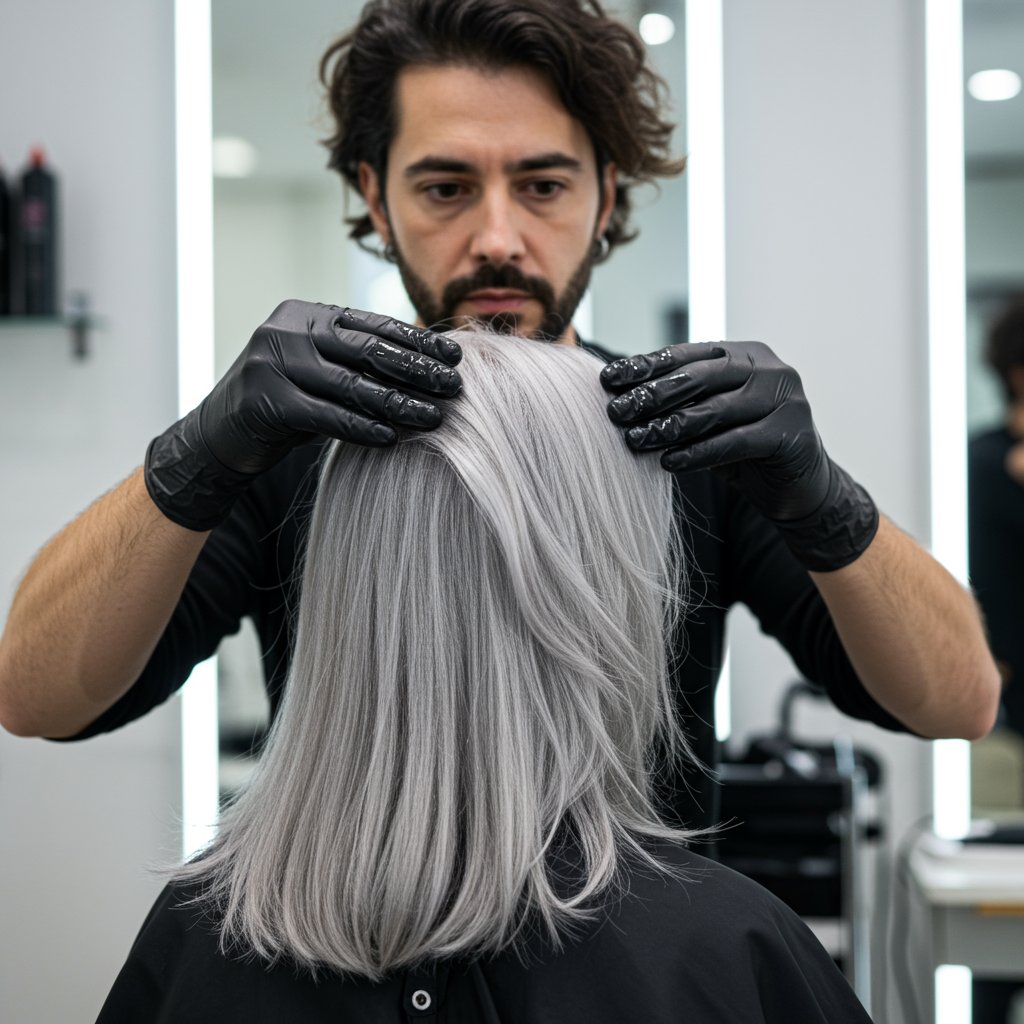Going Gray Gracefully: A Complete Guide to Embracing & Enhancing Your Silver Strands
The Journey to Silver: Embracing Your Natural Beauty
The decision to stop coloring your hair and embrace your natural grays is a powerful and liberating one. For years, silver strands were seen as something to cover up, but today, more and more people are choosing to celebrate their authentic color. Going gray gracefully is not about letting go; it's about stepping into a new era of style and confidence. This journey is a personal statement, a celebration of life's milestones, and an opportunity to redefine beauty on your own terms. Whether you call it silver, pewter, or salt-and-pepper, your natural hair is a unique crown that deserves to be worn with pride.

This comprehensive guide is designed to empower you on your path to silver. We will explore everything from the science behind why hair turns gray to the practical steps of managing the transition period. You'll discover the best hair care routines, flattering haircuts, and professional enhancement techniques that will make your silver strands shine their brightest. Embracing your gray hair is an exciting transformation, and with the right knowledge and support from experienced stylists, you can ensure the process is not only smooth but also incredibly rewarding. Get ready to fall in love with your hair all over again.
The Science of Silver: Why Hair Turns Gray
Understanding the biology behind graying hair can demystify the process and help you appreciate the natural changes happening. Hair gets its color from a pigment called melanin, which is produced by cells known as melanocytes located in your hair follicles. There are two types of melanin: eumelanin (which creates black and brown shades) and pheomelanin (responsible for red and yellow shades). The unique combination and concentration of these pigments determine your natural hair color.

As we age, the melanocytes in our hair follicles gradually become less active and produce less melanin. Eventually, they stop producing pigment altogether. When a new hair grows from that follicle, it lacks pigment, appearing translucent. Against the backdrop of your remaining pigmented hair, these new strands look gray or white. This process is primarily dictated by genetics; if your parents went gray early, there's a higher chance you will too. While factors like chronic stress, nutritional deficiencies (like B12), and certain medical conditions can sometimes accelerate the process, genetics remains the main driver of your silvering timeline.
The Transition Phase: Navigating the Grow-Out Process
The transition from colored hair to your natural gray can feel like the most challenging part of the journey. The line of demarcation between your old color and new growth can be stark. However, with a strategic approach, you can navigate this phase with style and confidence. There are several methods to choose from, and a consultation with a professional stylist can help determine the best path for your hair type, lifestyle, and desired look.

Blending with Highlights and Lowlights
This is one of the most popular methods for a seamless transition. A skilled colorist can weave in a combination of highlights and lowlights to break up the harsh grow-out line. Highlights help to lighten sections of the hair, mimicking the sparkle of silver strands, while lowlights add depth and dimension, blending the darker colored ends with the new growth. This technique creates a more multi-tonal, natural effect, making the grow-out process much less noticeable and more aesthetically pleasing. Over several appointments, the amount of artificial color can be gradually reduced until your natural gray has fully grown in.The 'Color Stripping' or 'Gray Blending' Service
For those seeking a more immediate change, a professional 'gray blending' or color correction service can be a game-changer. This involves a stylist carefully lifting the artificial dye from your hair to a shade that closely matches your incoming silver roots. This is a complex chemical process that requires significant expertise to maintain the hair's integrity. Afterward, a custom-blended toner is applied to create a beautiful, cohesive silver or salt-and-pepper look. While more intensive, this method eliminates the demarcation line in a single, transformative session.The Big Chop
If you're ready for a bold new look, cutting off the colored ends is the quickest way to embrace your natural gray. A chic pixie cut, a sharp bob, or another short style can instantly remove all the old dye, leaving you with a full head of your gorgeous new color. This option is not for everyone, but it offers a fresh start and a dramatic style update. It completely bypasses the awkward in-between stages of growing out color and allows you to start your new hair care regimen immediately on 100% natural, healthy hair.A New Hair Care Regimen: Essentials for Silver Hair
Gray hair has a unique structure and specific needs. The lack of melanin can make the hair feel coarser, drier, and more wiry than pigmented hair. The cuticle layer can also be more porous, making it susceptible to absorbing environmental pollutants and product buildup, which can lead to yellowing or dullness. Adopting a new hair care regimen specifically tailored to these needs is crucial for keeping your silver strands soft, shiny, and vibrant.

Hydration and Moisture are Key
Because gray hair tends to be drier, moisturizing products are non-negotiable. Switch to a high-quality, sulfate-free shampoo and conditioner formulated for dry or mature hair. Incorporate a deep conditioning mask or treatment into your routine at least once a week. Look for ingredients like hyaluronic acid, shea butter, argan oil, and keratin, which help to replenish moisture, smooth the hair cuticle, and improve elasticity. A leave-in conditioner or hair oil can also provide daily hydration and protect your strands from frizz and breakage.Toning to Banish Brassiness
One of the most common challenges with gray hair is unwanted yellow or brassy tones. These can be caused by everything from hard water minerals and sun exposure to heat styling. A purple-pigmented shampoo and conditioner are your best defense. The violet tones in these products work to neutralize yellow hues, keeping your silver bright and true. It's important not to overdo it; using a purple shampoo once or twice a week is typically sufficient. Overuse can sometimes leave a lilac tint, so find a balance that works for your hair.The Perfect Cut: Hairstyles that Flatter Gray Hair
A great haircut is transformative for any hair color, but it can be especially impactful for silver hair. The right cut can enhance your hair's texture, create movement, and frame your face beautifully, making your silver color look intentional and chic. Modern, structured shapes often work best, as they add a youthful edge and prevent gray hair from looking dowdy. Regular trims every 6-8 weeks are also essential to keep ends healthy and prevent the frizz that gray hair can be prone to.

Chic Bobs and Lobs
Classic cuts like a sharp, jaw-length bob or a soft, shoulder-grazing lob are incredibly flattering for silver hair. These styles are timeless, sophisticated, and easy to maintain. A blunt bob can make fine hair appear thicker, while a layered lob can add beautiful movement and volume. These structured cuts provide a perfect canvas to showcase the multi-tonal nature of salt-and-pepper or pure silver hair, making the color pop.Bold Pixie Cuts
A pixie cut is a confident and stylish choice that pairs exceptionally well with gray hair. It highlights your facial features, especially your eyes and cheekbones, and exudes a modern, edgy vibe. There are many variations, from a soft, layered pixie to a more audacious, asymmetrical cut. This style is low-maintenance in terms of daily styling but requires regular salon visits to keep its shape sharp.Enhancing, Not Hiding: Color Services for Gray Hair
Going gray doesn't mean giving up on hair color services entirely. In fact, professional color treatments can be used to enhance your natural silver, add dimension, and create a truly bespoke look. Instead of covering the gray, these services work with it, celebrating its unique beauty. Modern salons offer a range of options that can make your silver hair look more vibrant and polished than ever before.

Silver Glosses and Glazes
A clear or silver-toned gloss is like a topcoat for your hair. This semi-permanent treatment adds incredible shine, seals the hair cuticle to reduce frizz, and can help neutralize any faint yellowing. A professional glossing service can make your natural gray tones look richer and more luminous, giving your hair a healthy, high-end finish that lasts for several weeks. It's a fantastic way to boost the brilliance of your silver strands without committing to permanent color.Strategic Lowlights for Depth
For those with salt-and-pepper hair, adding strategically placed lowlights can create beautiful depth and dimension. A colorist can weave in shades that match the darker, pigmented parts of your hair. This technique adds contrast, making the silver strands pop and appear even brighter. It helps to break up a solid block of gray, creating a more dynamic and multi-faceted look that appears entirely natural. This is an excellent option during the transition phase or for anyone who wants to enrich their natural color pattern.Makeup and Wardrobe: Adjusting Your Palette
When your hair color changes so dramatically, you may find that the makeup and clothing colors that once suited you no longer have the same effect. Silver hair creates a new, neutral canvas, which opens up exciting possibilities for your personal style. It provides a stunning backdrop for vibrant colors and can inspire a refresh of your makeup routine.

Choosing Flattering Makeup Tones
Gray hair can sometimes wash out your complexion, so adjusting your makeup can make a huge difference. Defining your eyebrows becomes more important, as they frame your face. Consider a slightly cooler-toned brow pencil. A pop of color on the cheeks with a rosy or peachy blush adds warmth and vitality. For lips, don't be afraid to go bold; bright pinks, classic reds, and deep berries look stunning against silver hair. You might also find that switching from black eyeliner and mascara to softer charcoal, navy, or brown tones is more flattering.Embracing Bold Colors in Your Wardrobe
Silver hair looks absolutely incredible with jewel tones like sapphire blue, emerald green, ruby red, and amethyst purple. These rich, saturated colors create a beautiful contrast and make your hair shine. Don't shy away from crisp whites and deep blacks either, as they create a sophisticated, high-contrast look. Experiment with colors you may have avoided before; you might be surprised by what looks amazing with your new hair.Quick Tips for Dazzling Silver Hair
- Protect from the Sun: UV rays can yellow gray hair and make it brittle. Wear a hat or use a UV protectant hair spray when spending time outdoors.
- Use a Water Filter: Hard water can deposit minerals on your hair shaft, leading to discoloration and dullness. Installing a showerhead filter can make a significant difference.
- Sleep on Silk: A silk or satin pillowcase reduces friction on your hair as you sleep, which helps to minimize frizz, breakage, and tangles.
- Clarify Regularly: Use a clarifying shampoo once a month to remove product buildup that can weigh hair down and make it look dull.
- Embrace Oils: A lightweight hair oil applied to the ends can add shine, tame flyaways, and provide much-needed moisture.
- Mind the Heat: Gray hair can be more susceptible to heat damage. Always use a heat protectant spray before blow-drying or using hot tools, and try to use them on a lower temperature setting.

Frequently Asked Questions About Going Gray
Q: Will my hair texture really change when it goes gray? A: Yes, it often does. The cuticle of a gray hair strand is typically thinner than that of a pigmented strand, which can lead to a texture that feels coarser or more wiry. It can also be more prone to dryness, so focusing on moisturizing products is key.
Q: How often should I use a purple shampoo? A: For most people, using a purple shampoo once or twice a week is enough to keep brassiness at bay. Overuse can potentially lead to a slight purple tinge, especially on very light silver or white hair. Start with once a week and adjust as needed.
Q: Can I still color my hair if I decide I don't like being gray? A: Absolutely. Going gray is not a permanent, irreversible decision in terms of style. You can always choose to color your hair again. However, it's worth giving yourself time—at least a few months—to get used to your new look before making another change.
Q: How do I prevent my gray hair from looking dull? A: Dullness is often caused by product buildup or environmental factors. Use a clarifying shampoo periodically, incorporate shine-enhancing products like glosses or serums into your routine, and protect your hair from sun and hard water.
Q: Is gray hair more fragile than pigmented hair? A: It can be. While the strand itself isn't necessarily weaker, the dryness that often accompanies gray hair can make it more brittle and prone to breakage. Gentle handling, regular conditioning treatments, and minimizing heat styling are all important for maintaining its strength.
Your Silver Hair, Your Signature Style
Choosing to go gray is a journey of self-acceptance and a celebration of your natural beauty. It's an opportunity to reinvent your style and embrace a new chapter with confidence. While the transition may require patience and a shift in your hair care routine, the result is a sophisticated, unique, and stunningly beautiful look that is entirely your own. By understanding your hair's new needs and working with an experienced stylist, you can ensure your silver strands are not just healthy, but truly radiant.
Remember that going gray gracefully is about more than just a hair color; it's a mindset. It's about owning your look, celebrating your story, and wearing your silver crown with pride. Your hair tells a tale of wisdom, experience, and elegance. Embrace it, enhance it, and let your magnificent silver hair shine.


